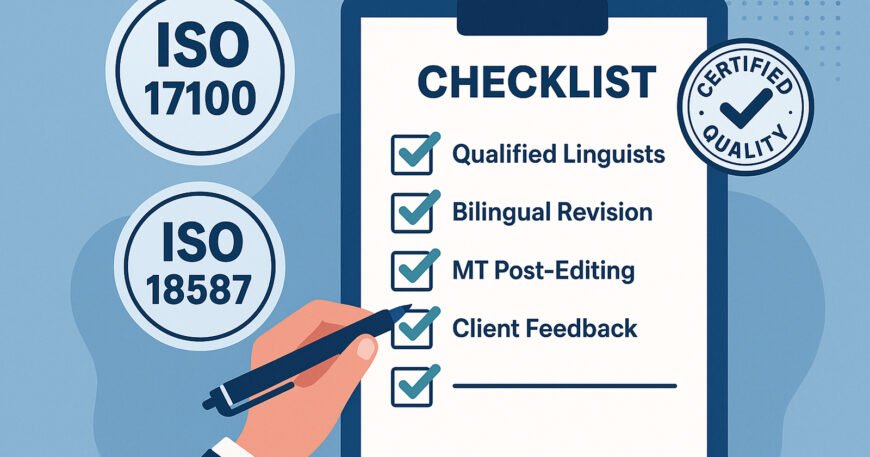Evidence in Accordance with ISO 17100 and ISO 18587
Compliance with ISO 17100 and ISO 18587 is a mark of quality and professionalism in the translation industry. These standards set clear requirements—and evidence is key to demonstrating conformity. For ISO 17100, evidence includes: Qualified linguist records (education, experience) Documented translation workflows and processes Client project briefs and agreements Bilingual revision logs by a second […]










